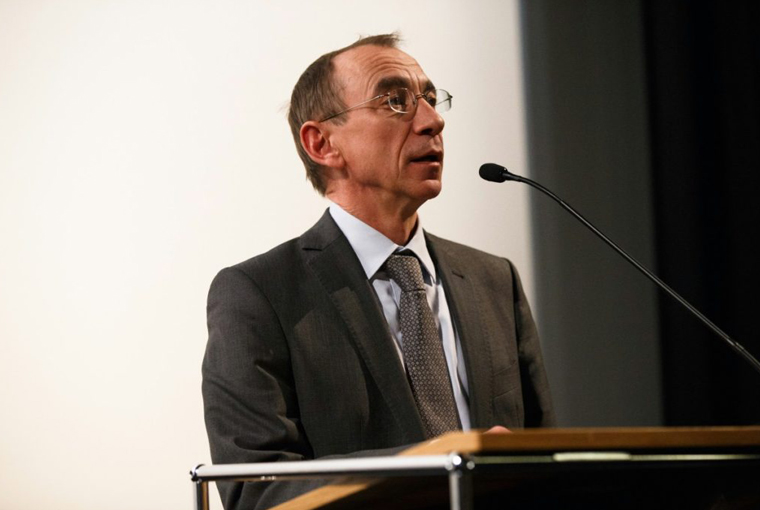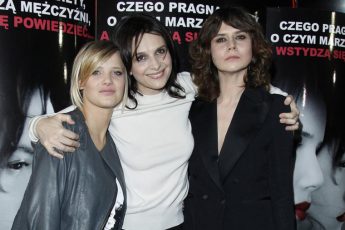
Rainer Rother, section director of the Berlinale Retrospective, speaks about its 2012 edition which revolves around “Mezhrabpom,” the former German-Soviet film studio which produced a wealth of films in the 1920s and 1930s. Due to a new partnership between the Berlinale Retrospective and the New York MoMA, a limited selection of the films will also be screened at MoMA in March and April. Alexander Schwarz, one of the curators of the Retrospective, will attend the event in April.
Could you explain your role in organizing the Retrospective for the Berlinale?
Organising a Retrospective – which we have been doing since 1977 at the Berlinale -, means coming up with a theme, a film selection, and organising the program. It normally starts as I present a theme to the director of the festival, Dieter Kosslick. We concentrate on three different kinds of retrospectives: personal retrospectives, a focus on technical aspects (the color retrospective was one of the most popular ones), and then there is a focus on certain themes in film history, like this year, when we concentrate on the Russian-German film relationship in the light of the Mezhrabpom film production studio.
What challenges did you face ?
The main challenge for any retrospective of this kind – and I think we are the only international film festival with a long-standing tradition of a retrospective – is that we have to find proper prints. They have to be in very good shape, or new prints. The situation for 35 mm prints is difficult nowadays, in the age of the digital era, and we are one of the few venues for 35mm projection in existence. Today, it is still managable: even for our Berlinale program, a little over 50 percent of the films screened are not in digital format. In two years or so, the rest of the festival will 100 percent digital, so that the Retrospective will really be the “museum” of the festival.
How did the collaboration with film historians Günter Agde and Alexander Schwarz for this year’s Retrospective come about?
Both are friends. Alexander was always very much interested in this particular part of history. About three years ago, he told me about his interest in Mezhrabpom and how he was applying to go to Moscow, so I mentioned that this could be a project for the Deutsche Kinemathek as well. So we told him to proceed, to go to Moscow, and then come back and tell us what he found out. When he came back from Moscow, he told me “they do have more films than I imagined,” which triggered the idea for coming up with some sort of program. After a while, we became aware that the material really was rich, and that the films were exceptional, and that it would be possible to screen the whole of the production with the best examples of each genre. Revolutionary films, propaganda films, comedies, both silent and “talkie” – thus reflecting the German-Russian film relationship.
Can you explain the term “The Red Dream Factory” ?
The term is contradictory. If you think about some of the really great masterpieces of Russian revolutionary cinema – Eisenstein, Pudovkin and the others-, there is not much room for dreams. Battleship Potemkin has a hope, but it is not about dreams in the way the “Dream Factory” usually is. It has no love affair, it has no stars – it’s spectacular, it’s convincing, it’s avant-garde, but all the rest of it is lacking.
These films never portrayed the Soviet Union, they portrayed the revolution: the founding moment of the new society, how “we” got rid of the Tsar, and how “we” managed to win the battles. In this type of story, there is the bad guy and the bad guy is the Tsar – it’s not really a portrayal of what you’ve got after you’ve undergone a revolution. This is also what the “Dream Factory” means.
At Mezhrabpom, the films were comedies, genre films, and adventure films about expeditions. You can see the entire society with its development and its problems in these films. This is told in a way considered “typical” for a studio: they used stars, formal genres, and production values in order to make the films as promising for audiences as possible. So this is also a part of the “Dream Factory”: to bring films to people who don’t want to see propaganda films, but entertainment films, and to bring them everything that entertainment entails.
What do you consider the important differences between German and Russian cinematography from this era?
The Germans were famous for architecture, for lighting, and for moving the camera around. That’s why Paramount hired Möder, because they wanted to have that kind of film in the United States.
German film was also famous for the co-operation of very different craftmanships: the architect, the camera-man, the scriptwriter and the director worked closely together to create a certain vision. If you look at Metropolis, you are in a world constructed exactly for that film. And these worlds were different every time: The Last Laugh does not look like Metropolis, which does not look like any of the other films either. This was the idea, to create visually convincing worlds.
That, however, was certainly not the interest of Russian films. When Russian films first came to Germany, and, after that to all of Europe and the United States, there were two things considered to be unique by international audiences. First, the way the actors played – which was perceived as being natural, trustworthy and authentic. They were not considered artificial films, but a part of life – a fact which struck me when I read film critiques of the time. Another thing is the way that Russians used montage, which was absolutely new. The direction they took was to create challenging confrontations through paradoxical montage.
Did this film studio break the norms of the German Expressionism or Soviet Realism ?
I’m not sure whether they broke the norms of German Expressionism since it may not have been very relevant to the studio. Perhaps, Aelita was influenced by Doctor Caligari, but what is crucial is that the studio took advantage of its position as a private-run stock company, which gave them the freedom to develop different types of stories. That is where they were breaking the rules. They were accused of being too bourgeois, too entertaining, without a sufficiently clear perspective or obvious political message. That created some difficulties politically, but it was also responsible for the popularity of these films in Russia in the 1920s.
Did the fact that the studio was privately-run also affect the style?
I can’t imagine that any other studio at that time would have produced the charming comedies of Boris Barnet who experimented with the technique of “freeze frames” in The House on Trubnaya. This director virtually freezes the image while he turns back time, so he creates a very reflective way of experiencing the story. I don’t think another studio would have done that. Also, the so-called “expedition” films that sent people all around the Soviet Union to discover the beauties of the Altai mountains, for example, and to tell a story there: other studios would not have produced such films. Aside from this unique content and style, though, Mezhrabpom also had the first sound film and the first color film in Russia: they were very open to new developments.
How have the films of the Mezhrabpom studio affected current film aesthetics?
These films are part of the history of film that is studied around the world. There is not a film student in the world who was not influenced by the Odessa scene by Eisenstein (Battleship Potemkin)… Like Hitchcock’s Psycho, these films are part of the collective memory of filmmakers around the world.
Why view these films today ?
They are funny films, and they are also well-made films. If you see the reaction of the audience, you see that they work as films. If you go to a festival and you don’t know anything about the film you’re about to see , it’s always a risk: it may not be a good film, or, it may not be your type of film. If you go to the Retrospective, however, we promise you it’s a film worth watching. It is going to be a good film – just trust us. The aesthetic experience is the main thing. We don’t do the Retrospective to expose the audience to bad films!
Thank you for the interview.




Leave a Comment